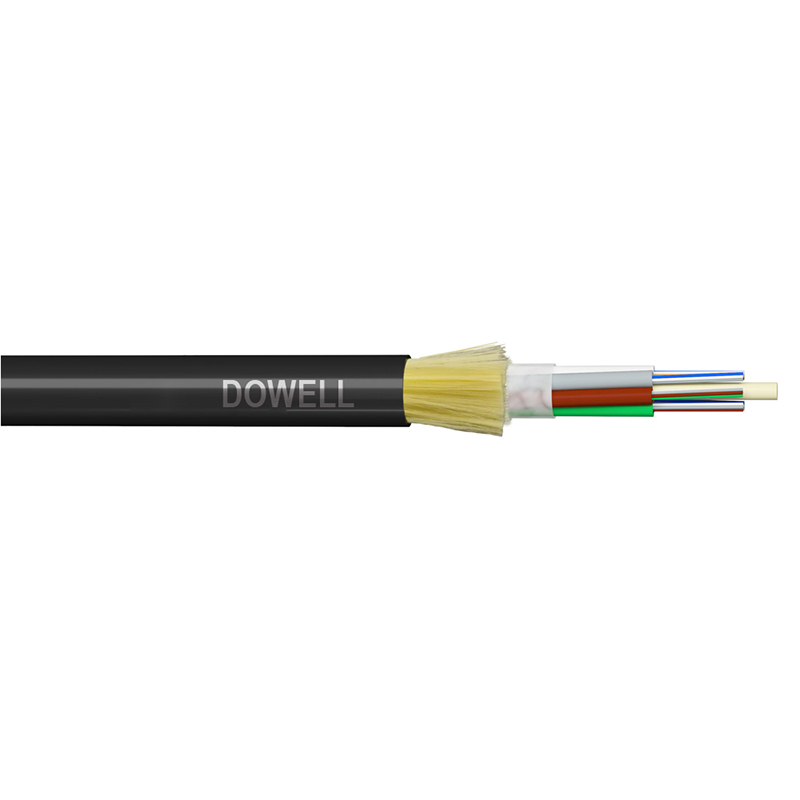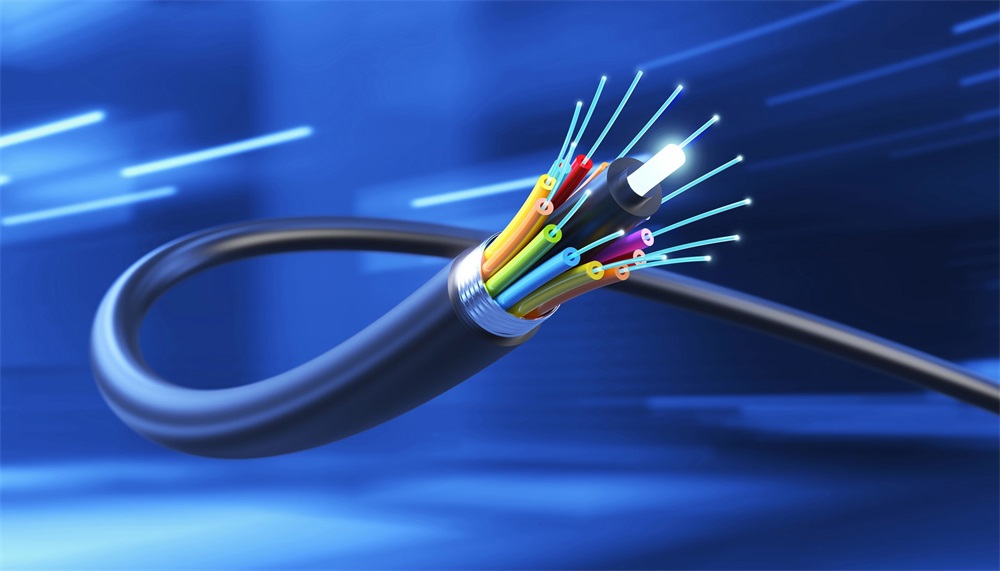 Choosing the right fiber optic cable for specific applications can be challenging. Understanding the differences between single-mode and multimode cables is crucial. Single-mode cables, with a core diameter of 9μm, excel in high bandwidth and long-distance applications. They offer up to 50 times more distance than multimode cables. In contrast, multimode cables, with thicker cores ranging from 50µm to 62.5µm, suit shorter distances, typically under 550 meters. When deciding how to choose fiber optic cable, consider the application’s distance and bandwidth requirements to ensure optimal performance.Types of Fiber Optic CablesSingle-mode Fiber Optic CablesCharacteristics
Choosing the right fiber optic cable for specific applications can be challenging. Understanding the differences between single-mode and multimode cables is crucial. Single-mode cables, with a core diameter of 9μm, excel in high bandwidth and long-distance applications. They offer up to 50 times more distance than multimode cables. In contrast, multimode cables, with thicker cores ranging from 50µm to 62.5µm, suit shorter distances, typically under 550 meters. When deciding how to choose fiber optic cable, consider the application’s distance and bandwidth requirements to ensure optimal performance.Types of Fiber Optic CablesSingle-mode Fiber Optic CablesCharacteristics
Single-mode fiber optic cables feature a core diameter of 9μm, surrounded by 125μm of cladding. This design allows only one light mode to travel through the core, typically using a laser. The single light path minimizes signal attenuation and dispersion, making these cables ideal for long-distance data transmission. They operate efficiently at wavelengths of 1310nm and 1550nm, which are optimal for high-bandwidth applications.
Pros and Cons
Pros:
- Long-distance capability: Single-mode cables excel in transmitting data over vast distances without significant loss.
- High bandwidth: They support higher data rates, making them suitable for high-demand applications.
- Cost-effective for long-term use: While initial costs might be higher, their efficiency in long-distance applications often results in lower overall expenses.
Cons:
- Higher initial cost: The equipment required for single-mode systems can be more expensive than multimode systems.
- Complex installation: Requires precise alignment due to the small core size, which can complicate installation and maintenance.
Multimode Fiber Optic CablesCharacteristics
Multimode fiber optic cables have thicker cores, typically ranging from 50µm to 62.5µm. This larger core diameter allows multiple light modes to travel simultaneously, which can lead to modal dispersion over longer distances. These cables are commonly used within data centers or between buildings in a campus setting, where transmission lengths are limited but require high bandwidth. They operate at wavelengths of 850nm and 1300nm.
Pros and Cons
Pros:
- Cost-effective for short distances: Multimode cables are generally less expensive for short-range applications.
- Easier installation: The larger core size simplifies alignment, making installation and maintenance more straightforward.
- Versatile applications: Suitable for various environments, including data centers and local area networks.
Cons:
- Limited distance capability: Multimode cables are not ideal for long-distance transmissions due to modal dispersion.
- Lower bandwidth potential: Compared to single-mode cables, they offer reduced bandwidth over extended distances.
Understanding these characteristics and trade-offs is crucial when selecting the appropriate fiber optic cable for specific needs. Each type serves distinct purposes, and the choice should align with the application’s requirements.
Comparing Single-mode and Multimode Fiber Optic CablesKey DifferencesDistance Capabilities
Single-mode fiber optic cables excel in long-distance data transmission. They can cover distances up to 50 times greater than multimode cables without significant signal loss. This capability makes them ideal for applications that require data to travel over vast areas, such as intercity or international communications. In contrast, multimode cables are more suitable for shorter distances, typically under 550 meters. Their design supports multiple light paths, which can lead to modal dispersion over longer distances, limiting their effective range.
Bandwidth and Speed
Fiber optic cables offer superior bandwidth and speed compared to traditional copper cables. Single-mode cables support higher data rates, making them suitable for high-demand applications requiring ultra-fast data transmission. They operate efficiently at wavelengths of 1310nm and 1550nm, which are optimal for high-bandwidth applications. Multimode cables, while offering lower bandwidth potential over extended distances, still provide sufficient speed for many local area network (LAN) applications. They operate at wavelengths of 850nm and 1300nm, making them effective for environments like data centers where high-speed data transmission is crucial.
ApplicationsSuitable Scenarios for Single-mode
Single-mode cables are the preferred choice for long-distance networks and high-bandwidth applications. They are ideal for telecommunications, cable television, and internet service providers that require reliable data transmission over large distances. These cables are also suitable for connecting different buildings within a campus or for use in metropolitan area networks (MANs), where long-distance capability and high-speed data transfer are essential.
Suitable Scenarios for Multimode
Multimode cables find their niche in environments where shorter distances and high bandwidth are required. They are commonly used within data centers, where they connect servers and storage systems. These cables are also suitable for local area networks (LANs) and campus networks, where the transmission lengths are limited but require high-speed data transfer. Their cost-effectiveness and ease of installation make them a popular choice for these applications.
How to Choose Fiber Optic Cable
Selecting the right fiber optic cable involves a careful assessment of specific needs and cost considerations. Understanding how to choose fiber optic cable ensures optimal performance and value for money.
Assessing Your NeedsEvaluating Distance Requirements
The first step in determining how to choose fiber optic cable is evaluating the distance over which data must travel. Single-mode cables are ideal for long-distance applications, often exceeding 10 kilometers without significant signal loss. They suit scenarios like intercity communications or connecting buildings across a campus. In contrast, multimode cables work best for shorter distances, typically under 550 meters, making them suitable for data centers or local area networks.
Determining Bandwidth Needs
Bandwidth requirements play a crucial role in deciding how to choose fiber optic cable. Single-mode cables support higher bandwidths, making them perfect for high-demand applications such as telecommunications and internet services. Multimode cables, while offering lower bandwidth over long distances, still provide adequate speed for many local applications. Consider the data rate and the number of users to ensure the chosen cable meets the network’s demands.
Cost Considerations

Budget Constraints
Budget constraints often influence how to choose fiber optic cable. It’s essential to obtain quotations from multiple providers to discover who offers the best value for money. Multimode cables generally have a lower initial cost, making them attractive for short-distance applications. However, single-mode cables, despite their higher upfront expense, may prove more cost-effective for long-term use due to their efficiency in long-distance scenarios.
Long-term Investment
Investing in high-quality materials for optical fiber cables is crucial for ensuring a stable and reliable connection over time. Quality cables reduce maintenance costs and enhance network performance. When considering how to choose fiber optic cable, weigh the initial investment against potential long-term savings. High-quality single-mode cables, for instance, might offer better returns in environments requiring extensive data transmission.
In conclusion, understanding how to choose fiber optic cable involves evaluating distance and bandwidth needs while considering budget and long-term investment. By aligning these factors with specific application requirements, one can make an informed decision that balances performance and cost-effectiveness.
Choosing between single-mode and multimode cables requires careful consideration of specific needs. Single-mode cables excel in long-distance and high-bandwidth applications, while multimode cables suit shorter distances with less demanding bandwidth requirements. To make an informed decision, assess the application’s distance and bandwidth needs. Consider future-proofing network infrastructure by investing in fiber optic cables, which offer advantages like exceptional bandwidth and low attenuation over long distances. As Connector Supplier highlights, fiber provides isolation from electromagnetic interference, making it a superior choice for reliable data transmission.
See Also
A Complete Guide To Efficient Fiber Optic Testing
6 Essential Tips For Choosing The Right Fiber Patch Cord
Why Fiber Optic Pigtails Are Crucial For Connectivity
How Fiber Optic Cables Are Transforming Communication Tech
Understanding Fiber Optic Adapters For Better Connectivity
Media Contact
Company Name: Dowell Industry Group
Email: Send Email
Address:4th Floor, Building A, 959 Industrial Park, No. 959, Chengxin Road
City: Yinzhou
State: Ningbo
Country: China
Website: https://www.fiberopticcn.com/













